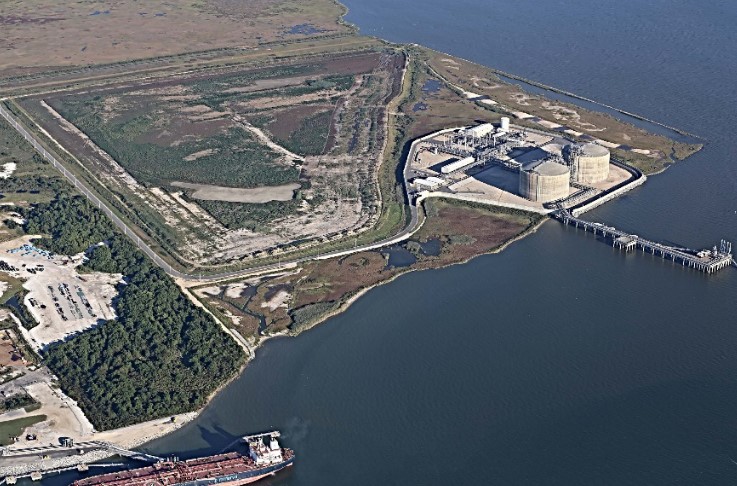US energy company Kinder Morgan and its partners have secured more time from the US FERC to add liquefaction and export facilities at the existing Gulf LNG import terminal in Mississippi.
According to a filling dated May 23, Gulf Liquefaction and Gulf Energy won an extension of time, until July 16, 2029, to construct and make available for service the Gulf LNG liquefaction project.
“The Commission has found that good cause exists for an extension of time where the authorization holder has made a good faith effort to complete authorized actions within the time allotted but encountered circumstances that prevented it from doing so,” the FERC said.
Back in July 2019, the regulator granted approval to the two companies to construct and place into service the liquefaction project in Jackson County, Mississippi, by July 16, 2024.
In February this year, the companies requested a five-year extension of time to construct the project and place it into service, saying that the Covid-19 pandemic and a litigation with the import customers had affected the project to meet its deadline.
Kinder Morgan owns 50 percent in the project through its unit, Southern Gulf LNG Company, the operator of the Gulf LNG terminal, according to its website.
Thunderbird Resources Equity, partially owned by Blackstone’s GSO Capital Partners, owns 30 percent, while other partners include Zenith Energy, controlled by Warburg Pincus and Kelso, and Chatham Asset Management.
Two trains
The existing import terminal has a single jetty that is currently permitted to receive up to 170,000 cbm LNG vessels and designed to handle vessels with capacities of up to 250,000 cbm.
As part of the liquefaction project, the permitted limit will be increased to 208,000 cubic meters, according to Kinder Morgan.
The import facility has two LNG storage tanks, each with a capacity of 160,000 cbm, and a storm surge protection wall.
Kinder Morgan said that KBR has previously completed FERC FEED engineering for two liquefaction trains and associated facilities based on its design using APCI C3MR technology.
The project will enable the receipt, treatment, liquefaction, and export of up to 10.85 mtpa per year of LNG.
Also, the project has received authorization from the US Department of Energy to export to both free trade agreement and non-free trade agreement countries, Kinder Morgan said.
Litigation
Gulf LNG said in its filling in February that it had been involved in “complex litigation with its existing import customers over the scope and status of their terminal use agreements.”
The import customers are not bringing in ships to the LNG import facility, which was placed in-service in October 2011.
Gulf LNG said this litigation has progressed and “only a small remaining piece remains on appeal at the NY Appellate Division”.
“The litigation has hampered GLLC’s ability to execute commercial liquefaction off-take contracts with commercially manageable contingencies because the existing GLE facilities are tied up in litigation,” it said.
“The appeal of the final case in a long line of cases was filed in October 2023 and is currently pending before the NY Appellate Division, with an expectation that it will be resolved this year, subject to potential final appeal to the NY Court of Appeals,” it said.
FID in 2025?
Gulf LNG said it is in “active negotiations with several potential customers and developers for significant volumes of LNG under long-term offtake contracts.”
“GLLC anticipates that FID could occur as early as next year, and a precondition of FID would be that all FERC authorizations remain in full force and effect,” it said.
In 2023, the company worked with an EPC company to verify front-end engineering design and update the EPC cost estimate.
“Due to the large scale of the LNG export terminal facilities, it is anticipated that the construction of these facilities will take 52-56 months to complete, with construction commencing immediately following FID,” it said.

